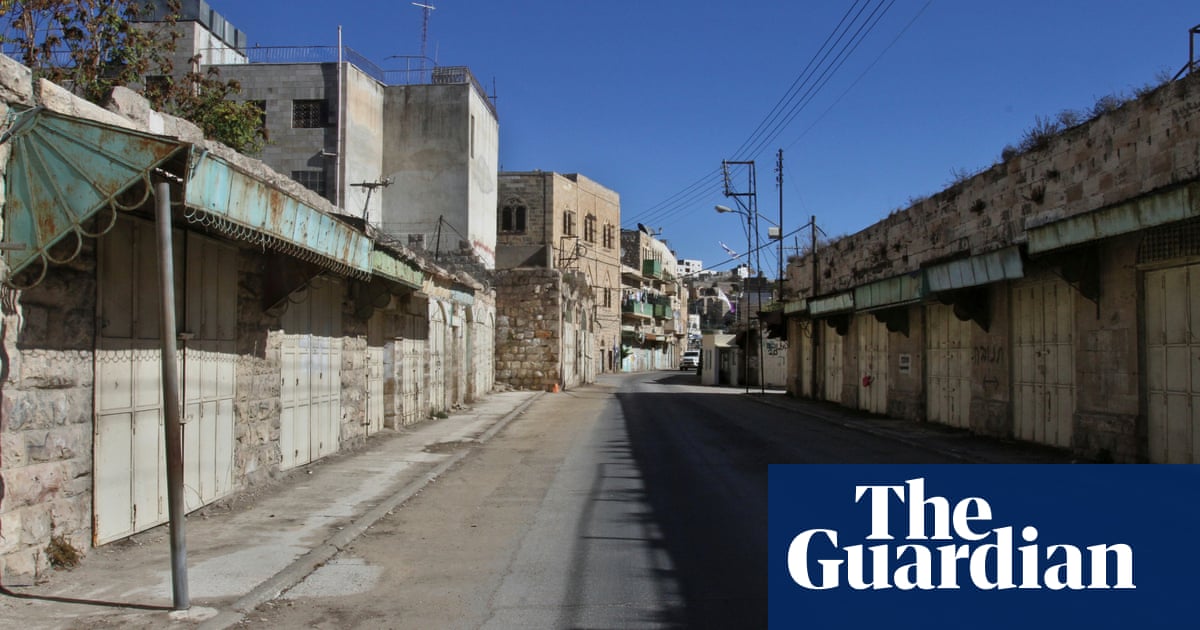Shaadi Muqtasen is deeply concerned about his children, who have been experiencing extreme boredom after spending nearly four months confined at home without attending school, and his dogs, which have been displaying signs of frustration after being confined in a small yard for over 100 days.
Residing in the heart of historic Hebron, a highly disputed and heavily militarized area in the West Bank, life for Palestinian locals came to a standstill following an attack by Hamas on 7 October.
Under the control of Israeli security forces with a guard post nearby, Muqtasen’s neighborhood was immediately placed under a strict lockdown resembling house arrest, even for the children.
During the initial month, they were prohibited from stepping outside at all. The sound of guns being readied could be heard if they attempted to peek through the door grille.
Garbage accumulated in their courtyard as they were unable to dispose of it due to the restrictions. Muqtasen was permitted to leave once a month for an hour to procure food for his family, resulting in hurried purchases of wheat bags, akin to feeding animals.

Subsequently, the restrictions were slightly eased, allowing residents to venture out three days a week. Presently, they have the freedom to go out daily, albeit with an informal curfew starting at 7 pm. Schools and most local shops remain shuttered, with reports of a barber being assaulted for attempting to reopen.
The inhabitants of central Hebron are no strangers to violence and enduring stringent controls dating back over two decades, including prohibitions on accessing certain streets that are open solely to Israelis. Nonetheless, they assert that the current limitations are unparalleled.
Muqtasen expressed, “Our life was challenging here, but never to this extent.” While recalling a curfew during the second intifada where food was passed through rooftops via a human chain, he emphasized that the current situation is far more severe, aimed at coercing them to vacate the area.
Residents of “H2,” the sector of Hebron under Israeli jurisdiction to safeguard around 800 Israeli settlers amidst 34,000 Palestinians, recount being confined to their residences, subjected to harassment and assaults since the October incident.

Issa Amro, a peace activist in Hebron, who was detained and mistreated on 7 October, highlighted the settlers’ attempts to exploit the Hamas attack to strengthen their position, potentially displacing Palestinian civilians under the guise of combating terrorism.
Hebron, a crucial economic center for the Palestinian Authority and the second largest city in the West Bank, is a focal point of conflict due to its religious significance and political complexities.
The town is home to a historic compound constructed by King Herod, believed by Jews, Christians, and Muslims to encompass the tombs of the patriarch Abraham and his family, attracting followers and extremists from all Abrahamic faiths.

With a tumultuous history marked by tragic events like the 1929 massacre of Jews by Arab mobs and the retaliatory killing of Muslim worshippers by a Jewish extremist in 1994, Hebron remains a stronghold for Hamas in the West Bank and a breeding ground for Israel’s far-right settler movement.
Partitioned into H1 under Palestinian Authority jurisdiction and H2 under Israeli control post the Oslo Accords, Hebron epitomizes extreme separation systems, often likened to de facto apartheid, within the West Bank.
The intricate network of security measures imposed by Israel in Hebron, justified as essential for the safety of both Israelis and Palestinians, has been intensified post the October incident, blurring the lines between settlers and the military.

The amalgamation of armed groups, settlers, and military personnel has led to a state of confusion and fear among Palestinian communities, with reports of unwarranted searches, detentions, and closures, resembling a militia rather than a structured authority.
The dire situation in Hebron is exacerbated by the restrictions on movement, preventing essential services like medical aid, repairs, and education from reaching the residents, leading to instances of severe distress and suffering.
While the IDF refutes claims of a curfew and asserts that traffic restrictions are based on operational assessments, the reality on the ground paints a starkly different picture of a populace confined to their homes under the shadow of intimidation and uncertainty.
